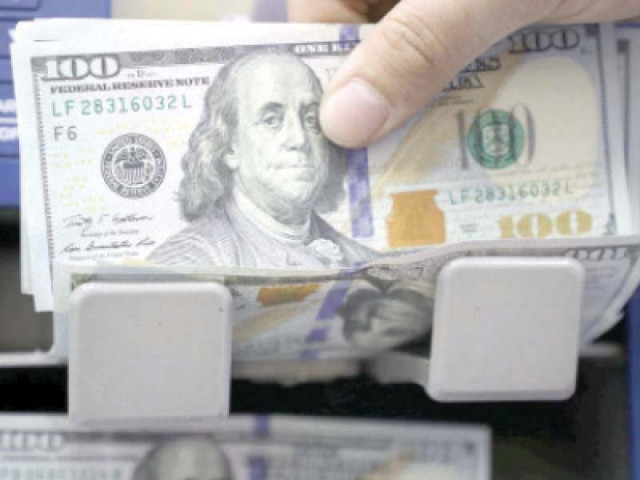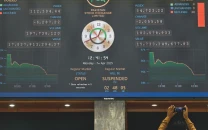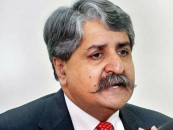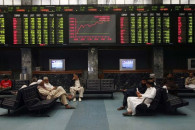Loan projections shared with IMF
Pakistan keeps unchanged old estimates as it expects to get $32b in foreign funds

Pakistan still hopes to get a total of $32 billion in foreign funds in the current fiscal year, as it has largely kept unchanged its old projections, except for commercial loans and sovereign bonds, show new details shared with the International Monetary Fund (IMF).
The estimates include budgetary loans of $23 billion, grants of $1.5 billion and balance of payments support of $6 billion by the IMF and the United Arab Emirates (UAE), according to the government sources. However, the projections appear optimistic as during the first quarter of current fiscal year only $4 billion could be received.
The revised projections have been shared with the IMF this week to convince the global lender that the country remains solvent and its financing needs are fully covered. However, the external debt repayment and interest cost are estimated at $25 billion, including the UAE loan of $2 billion that Pakistan is trying to get rolled over before February next year, said the sources.
Only $8.4 billion will be required for debt servicing in the January-March quarter, including the UAE loan. There is hope that the UAE will reschedule its debt. The finance ministry projected that it would be able to get $10.6 billion in longterm loans from the multilateral and bilateral lenders, said the sources.
The maximum loan of $2.9 billion is expected to be disbursed by the World Bank, of which $1.7 billion is programme financing. The government is betting that the World Bank will approve a $500 million loan by January and another $900 million in the last quarter of current fiscal year.
However, the arrival of these loans will depend on meeting some critical conditions like legislative changes by the provinces and negotiating with China to reopen contracts of independent power producers (IPPs), which may not be an easy task. Project financing by the World Bank is estimated at $1.2 billion, although in the first quarter slightly over $400 million was disbursed. Similarly, the government has estimated the receipt of $2.8 billion from the Asian Development Bank (ADB) and over half of it has already been received.
The government has projected provision of a $950 million loan from the Asian Infrastructure Investment Bank, of which it has already received $500 million last month. Pakistan and the IMF have not been able to bridge differences as Finance Minister Ishaq Dar said on Friday that he did not care whether an IMF mission came to Pakistan or not.
The minister’s statement has rocked the markets. The finance minister stated last week that he was expecting a $3 billion lifeline from a friendly country. But the ministry’s projections did not include this inflow. Pakistan has also been trying to attract an investment of $3 billion from the UAE, but so far there is no tangible progress. Dar on Tuesday separately met with the ambassadors of the United States, China, the United Kingdom and Sri Lanka.
Pakistan has estimated that it will receive $6.2 billion in foreign commercial loans, down from the previous estimate of $7.5 billion. During the first quarter, no such money was received. Instead, Pakistan has paid back $1.2 billion to the Chinese commercial banks, which it expects to be refinanced by Beijing this month. Out of the estimated foreign commercial loans of $6.2 billion, $3.5 billion will come from China.
The remaining $2.7 billion will be provided by the nonChinese foreign commercial banks having shorter maturity periods. Due to the repayment of Sukuk and Chinese commercial loans, the foreign exchange reserves held by the State Bank of Pakistan (SBP) dropped to around $6.7 billion by the end of last week, according to sources. China will also roll over a $4 billion debt from the State Administration of Foreign Exchange (SAFE).
Receipts from the IMF are estimated at $3.9 billion, including the $1.1 billion that has already been disbursed. The country has estimated receiving $1.2 billion from the Islamic Development Bank (IDB) on account of oil supply on deferred payments. Another $1.4 billion is expected as the value of Saudi Development Fund’s oil facility, while the kingdom has already rolled over a debt of $3 billion. “There is no danger of default and Pakistan aims to complete the IMF programme,” said Dr Aisha Ghaus Pasha, Minister of State for Finance, on Tuesday.
She added that Pakistan and the IMF were virtually engaged. Besides, the government has estimated the receipt of $900 million under the Naya Pakistan Certificates, lower than the earlier projection of $1.6 billion for the entire fiscal year. Another $1 billion is projected to be received by floating sovereign bonds in the fourth quarter, according to sources.



















COMMENTS
Comments are moderated and generally will be posted if they are on-topic and not abusive.
For more information, please see our Comments FAQ